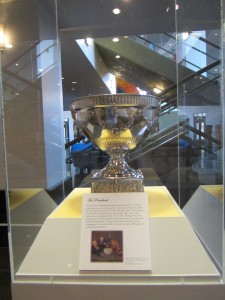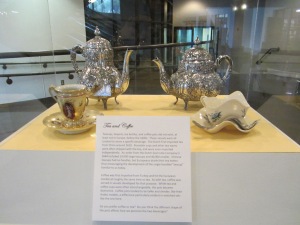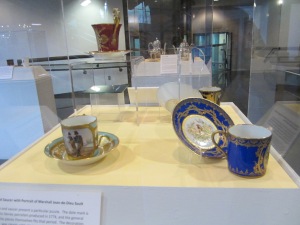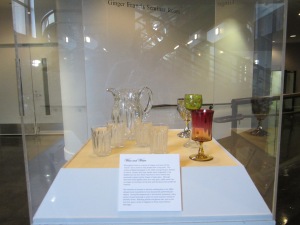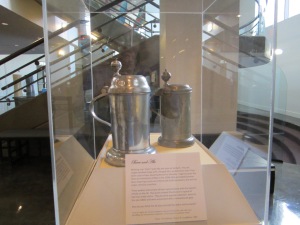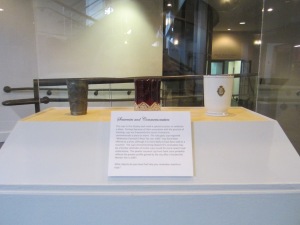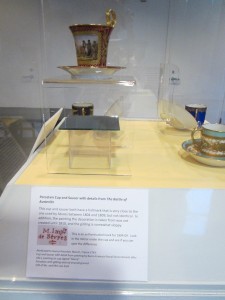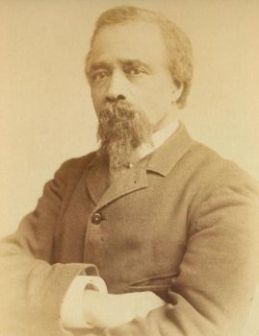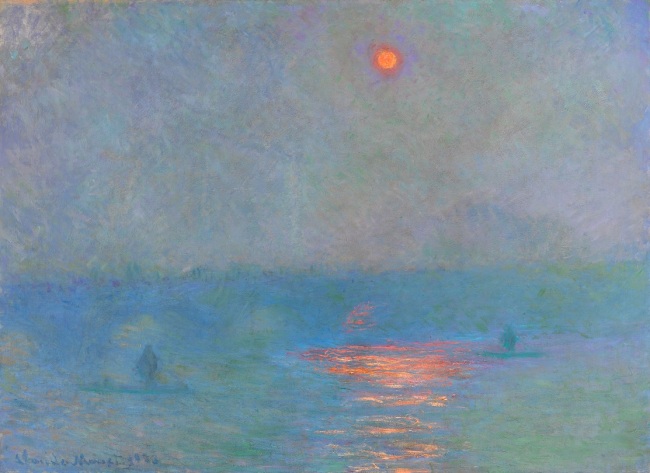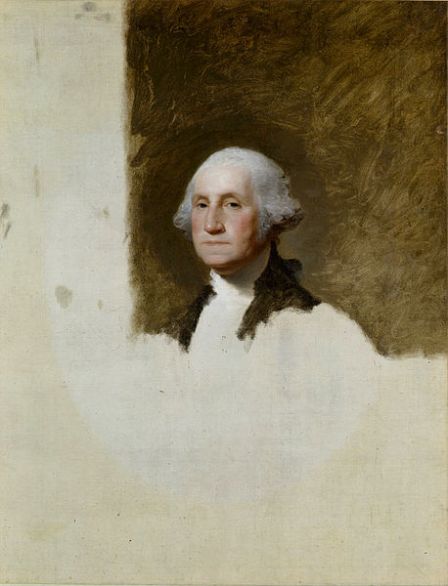I was asked by the Museum Director to draft, record, and upload a series of audio guides for works in the permanent collection. Below is a link to the labels for these guides. The actual audio is accessible if you follow the instructions on them. This can be done from any type of phone.
Tag Archives: museum interpretation
“Snapshots” of works in the El Paso Museum of Art’s permanent collection
I was asked by the Director of the Museum to write up brief summaries of the most interesting aspects of some of the more important works in the collection. Ultimately these will be published on the EPMA’s new website in December of 2017.
“Snapshot” of Works in EPMA’s Collection
Ambrogio Lorenzetti (attributed to), Madonna and Child, c.1335-40
NYU conservator Diane Modestini has made a strong argument in favor of this being a true Lorenzetti. If so, it’s one of the very few outside of Italy. Ambrogio Lorenzetti is viewed as one of the most important Italian artists of the 1300s, and was a leading figure in Siena’s dominance of Italian art during that time. People in Siena loved their “bling” and this painting illustrates that with its stunningly rich and detailed depiction of embroidery on the Madonna’s gown and veil. It also reveals the use of red earth as a base for the gilding that we see in religious paintings from the 1100s to the 1400s. In this painting, the gold leaf has worn off and we can see the red underneath (also true for the flanking saints in the Giovanni di Paolo Assumption of the Virgin). Finally, and perhaps most significantly, the composition in which the Madonna’s cheek touches the Christ Child’s shows the increasing interest in the human emotions of holy figures.
Master of the Osservanza, Adoration of the Shepherds, c.1440
This is a jewel of a painting that’s a great example of a personal and portable altarpiece, in which the two outer wings are hinged and can be closed on top of the center panel. It’s also by a Siennese painter (or painters) and shows that love of rich color and gold leaf. However, it also illustrates the influence of an increasing interest in depicting natural settings as opposed to a solid gold leaf background. The identity of this particular artist has been much debated. It may be the work of a temporary company of artists, or of Sano di Pietro (who painted another one of the Kress’ Madonna and Child works).
One of the most fascinating things about this painting is the way its composition is similar to a graphic novel. On the top of the left wing is the angel Gabriel kneeling in front of Mary, who’s on the top of the right wing, reacting to seeing the angel and hearing the announcement of her holy pregnancy. In the center panel up at the top are shepherds reacting to the angel announcing the birth of Christ, and at the bottom, those same shepherds, with their dog, have come to see the baby Jesus. At the very top is the Last Judgement with the souls of the blessed on Christ’s right (viewer’s left) and the damned on Christ’s left. Together these scenes form the essential story of Christ.
Filippino Lippi, Saint Jerome in his Study, mid 1490s
Filippino Lippi was the son of a well-known Florentine painter, Filipo Lippi, who just happened to be a monk (Filippino’s mother was a nun). The elder Lippi taught Sandro Botticelli, who, in turn, taught the younger Lippi. This means EPMA has paintings by both the teacher (Botticelli) and pupil (the younger Lippi). By the time he painted Saint Jerome in his Study, Filippino was almost as sought after by patrons as his teacher.
St. Jerome was the name saint of Friar Girolamo (Jerome) Savonarola, who was a powerful figure in Florence during the 1490s. He preached passionate sermons on the need to reject luxury and act in a Christ like manner. He also encouraged personal devotion and identification with Christ and the saints through the contemplation of proper images that reflected the values of simplicity. The nephew of one of Filippino’s friends and patrons was an avid follower of Savonarola, so the artist may have done work for Savonarola supporters. The simple environment surrounding Jerome, and the way in which his contemplative figure is pushed to the front and framed by his desk, would have made it an excellent candidate for encouraging personal devotion. The Saint appears focused on his work of writing (Jerome is noted as having written the first version of the Bible in Latin) with no decorations or other people to distract him. Filippino’s interest in the detailed realism of artists in the Netherlands and Flanders is reflected in Jerome’s weathered face, and the objects that are in the room.
Sandro Botticelli and workshop, Madonna and Child, mid 1490s
One of the leading artists in Renaissance Florence, Sandro Botticelli is probably the most universally known artist in the Kress Collection. Most people are at least generally familiar with his painting Birth of Venus, which shows the goddess standing on a seashell and being blown to shore by a wind god. The face of the Madonna in EPMA’s painting bears a strong resemblance to the face of Venus, and other of Botticelli’s pictures of women. This probably results from the artist’s awareness of the ideal of beauty in Renaissance Italy, which included pale skin, thin, dark, eyebrows, a broad forehead, a long neck, small dimpled chin, and slender fingers.
This version of the Madonna and Child is from late in Botticelli’s career and indicates the influence of an increasing focus on personal devotion among many leading Florentines. The round or “tondo” shape was for domestic rather than church use, and the figure of Mary is dressed relatively simply, although still in fashionable clothing of the 1400s. In addition, there is little use of gold, and at least one conservator argued that the gold on Mary’s robe is a later addition. Finally, the composition pushes Mary and Christ to the forefront and focuses the viewer’s attention clearly on them. The tender way that Mary holds her son and his clinging to her veil was likely intended to encourage an emotional connection to the holy pair.
Lavinia Fontana, Christ with Symbols of the Passion, 1576
Lavinia Fontana, who lived and worked in Bologna, Italy, is one of the earliest documented female artists in Europe. She is also noteworthy because she was more successful than her father Prospero, also a painter, and became the breadwinner in her family, while her husband looked after the household. This is one of a few surviving works painted before her marriage. Her signature on the tablet at the front left side designates her as “Lavinia Fontana, virgin.” She created two versions of this painting (the other is in the collection of Rollins College) but EPMA’s is the original one.
This painting is a wonderful example of Fontana’s use of color, detailed depiction of nature, and focus on the emotional impact of religious scenes. The emotion is conveyed in the contrast of the children, probably intended to represent putti, or child angels, and the size and weight of the cross, column, and Christ’s body that they struggle to hold up. It also shows Fontana’s use of Mannerist style in the dramatic twist of Christ’s body, and the elongated proportion of the angel holding the cross. The symbols of the Passion include the cross, column on which Christ was whipped, nails (in the hand of one of the angels holding the column), whip, crown of thorns, sponge (below the cross), and the burial shroud.
Artemisia Gentileschi and studio, Saint Catherine of Alexandria, c.1630-35
Artemisia Gentileschi is probably the most well-known early female European artist. Among her achievements, she was the first female member of the Academy of Art and Design in Florence. Her father, Orazio, was a very successful painter, and fostered her training and career. Artemisia’s subject matter was often dramatic and bold, and broke the expected mold for female artists. This particular painting, however, shows the softer side of her work, and possibly the work of her daughter.
There is a marked difference in the technical skill evident in the painting of the head and neck, and the remainder of the figure, where the clothing, in particular, falls in an awkward way. This indicates two artists at work, one of whom appears to have been less experienced. We know that Artemisia did teach her daughter Prudentia, who would have been around 14 in 1632, so it’s likely that this painting of St. Catherine was a mother/daughter production. According to legend, St. Catherine considered herself married to Christ, and was tortured on the wheel and executed for her refusal to marry when ordered to do so by the Roman Emperor.
Bartolome Esteban Murillo, Ecce Homo, c.1672-78
Bartolome Esteban Murillo is one of the most famous Spanish painters. He dominated Spanish art in the mid to late 1600s and is one of the only painters of the period to have become known beyond Spain during his lifetime. He lived and worked in Seville, where he received major Church commissions, one of which may have included this painting. It was painted late in Murillo’s career and is characterized by the soft edges, diffused light, and sketchy brushwork that gave his artworks their soothing, gentle appearance. This style proved very popular in Seville by the late 1660s, and may have been viewed as an antidote to the increasingly difficult reality of life in the city during a period of severe economic decline.
Murillo painted several versions of the Ecce Homo (or Man of Sorrows). We know that as of 1786, this version was in the Chapel of the Virgin of Pilar in the Seville Cathedral. The text was added in 1838 when the painting was presented to King Louis Phillipe of France. In an interesting connection, Louis Phillipe’s father, Louis Phillipe II, Duc d’Orleans, was the last member of his family to own EPMA’s Education of Cupid by Lambert Sustris.
Hyacinthe Rigaud, A Magistrate of Requests, c.1702
In conversations with museum visitors, they will often remark that the gentleman in this portrait seems like someone they’d like to meet. Hyacinthe Rigaud was a highly successful portrait painter, in part due to his ability to give his paintings a sense of individuality and dignity. His most famous work is a full length portrait of King Louis XIV, which hung in the palace at Versailles. The royal portrait was widely praised, and Rigaud received commissions from several other members of the royal family.
The artist, however, gave the same attention and skill to his portraits of members of the upper middle class. This portrait is one of many that he painted of judicial officials who supported royal government at the local level. A Magistrate (or Master) of Requests was appointed to review any decisions of the local governing body that were appealed. Rigaud’s portraits of this type of official often included references to their work such as the book which the subject appears to have been reading. His authority as a representative of royal justice is emphasized by the velvet canopy over his head. Sitters would have been able to choose details such as these from examples in the artist’s studio.
Bernardo Bellotto, Entrance to a Palace, c. 1762-65
The “palace” pictured here never existed except in the mind of Bernardo Bellotto, whose expertise in painting architecture enabled him to create his own imagined building (a cappricio) that any viewer would assume to be an actual building. Bellotto’s expertise came in part from his study with his famous uncle, Giovanni Antonio Canal, or Canaletto. The signature on this painting reveals that the artist capitalized on his uncle’s reputation by signing it “Bernardo Bellotto de Canaletto.” By the time he painted this work, he was on the hunt for a new patron, and hoped the Polish Count Voivod Potocki could give him an introduction to the Polish court.
One can argue that, in some ways, Bellotto surpassed his teacher. When you look carefully at some of the architectural elements, such as the tops of the columns that run along the front of the palace, or the decorative sculptures, you can notice that the thickness of the paint application makes them actually three-dimensional. Another way in which Bellotto moved beyond Canaletto, at least in this painting, is his inclusion of ordinary people, even a beggar, alongside and equal in size to, Potocki, his son, and their servant, grouped on the left foreground. While we can’t be sure of the reason for Bellotto’s inclusion of the humble figures, it may be due to his experience of the social consequences of the Seven Years War, during which Dresden was heavily bombarded.
Gilbert Stuart, George Washington, n.d.
During his lifetime, Gilbert Stuart was the most famous portrait painter in America. He studied with the English painter Benjamin West from 1775-1780 and stayed in England until 1792. This meant that when he returned to America, he had the desirable factor of having been accepted as a portraitist by English society. He has the distinction of being one of only four American artists for whom President Washington posed (one of whom was Rembrandt Peale). EPMA’s version of the most famous of the portraits was commissioned by Richard Worsam Meade, Naval Agent to Spain under President James Madison.
Beginning in 1918, silver dollar notes bore an engraved version of Stuart’s portrait of Washington. As a consequence, most Americans have become extremely familiar with this image, but don’t necessarily know where it came from. Stuart’s portrait of Washington was so popular in his lifetime that he painted multiple versions of it (over 100), based on his original unfinished painting of 1795. The story goes that he was so pleased with the original that he left it unfinished in order to keep it as a model. According to Stuart, Washington was a very difficult sitter. He observed that, when posing, “An apathy seemed to seize him and a vacuity spread over his countenance, most appalling to paint.” No wonder he kept what he viewed as a good “take.”
Thomas Sully, Margaret H. Sanford and Portrait of John Sanford, 1830 (pair)
Thomas Sully was second only to Gilbert Stuart as the most sought-after American portraitist in the years following the Revolution. He was born in England but his family immigrated to Richmond, Va. when Sully was a boy, and he opened his first portrait studio there in 1804. He moved to Philadelphia in 1806, and arranged to study with Britain’s famous portrait painter Benjamin West in 1809. Sully’s mastery of rapid but delicate brushwork and use of light was flattering to his sitters, and allowed him to paint quickly.
The couple in these two portraits, were painted either shortly before or after their wedding on July 17, 1830. Margaret Halliday Sandford (1812-1860) was the daughter of a wealthy merchant in Fayetteville, N.C. John Sandford (1800-1870) moved to Fayetteville from Philadelphia in 1825 to work at a branch of the second Bank of the U.S.* Sully did travel for his profession, and so these may have been painted in North Carolina, but it’s equally possible that the couple spent time in Philadelphia, where John’s family was located, and had the portraits painted there. Sully’s approach emphasizes Margaret’s grace, but also her wealth, while John appears lively but a proper businessman.
Margaret was later remembered as follows (c.1880): “Mrs. Sandford was a model of refinement of manners and all wifely accomplishments, noted for the sweetness of her temper and unfailing cheerfulness of spirit.”
*I’ve added photographs of the Sandford House, the Halliday House, and the ballroom where the wedding celebration was held, to the object file.
Rembrandt Peale, Girl at a Window, 1846
Rembrandt Peale was the son of the successful American painter and naturalist Charles Wilson Peale. He studied with Benjamin West in England, and met the artist Jacques Louis David while in Paris, before settling in Philadelphia in 1831. The younger Peale excelled at painting idealized images inspired by neoclassical painters such as David. He was based in Philadelphia, but spent time in all of the major American cities, as well as those in Europe.
Girl at a Window is Peale’s version of Rembrandt van Rijn’s painting of the same name. In Peale’s painting, the young woman is the image of Victorian perfection, smoothly painted with rosy checks, large, dewy eyes, and hair with soft curls. His daughter Rosalba may have been the model. Peale was among many artists to have created versions of Girl at a Window, including Thomas Sully.
Edward Mitchell Bannister, Untitled Landscape, c.1883
This small painting is one of the more significant pieces in EPMA’s American collection, because it was painted by one of the first African-American artists to be recognized nationally. In 1876 Bannister’s large-scale painting, Under the Oaks (now lost) was awarded a first prize at the Philadelphia Centennial. According to his recollection, the jurors for the exhibition were quite shocked to realize that they’d awarded a prize to a black man, but his fellow artists defended the award and his skill.
Bannister was born in Cananda in 1828, and moved to the U.S. in the 1850s, where he worked as a barber and later became part of the Abolitionist movement. He married Christina Carteaux, a very successful society hair-dresser, and settled in Providence, Rhode Island, where she had connections. Bannister loved the natural world, and was drawn to the celebration of nature that he saw in the work of the French Barbizon School and early Impressionists. After capturing the award at the Centennial, he received numerous commissions for works which included biblical and mythological scenes, although he remains best known for his landscapes such as this one.
John Henry Twachtman, Twilight, n.d. (probably c. 1880-1893)
John H. Twachtman was one of the most innovative of the artists designated as American Impressionists. Twilight probably depicts a landscape on his Greenwich, Connecticut farm, which he bought in 1891. The stone wall that runs diagonally through the scene was typical of New England farms, and such walls frequently appear in Twachtman’s paintings from this period. This painting may have been exhibited at the Chicago World’s Columbian Exposition in 1893, under the title Autumn Shadows.
He first studied art in Cincinnati, and then in Munich. The most significant impact on his work, however, was time in Europe from 1883-85, where he painted with Childe Hassam and Willard Metcalf, and saw paintings by James McNeil Whistler. Afterwards Twachtman’s brushwork became increasingly loose, with more muted colors. Art Historian Susan Larkin observed that “[Twachtman’s] lack of commercial success contributed to his artistic independence, freeing him from the temptation of producing saleable pictures according to a proven formula” and many of his paintings, such as this one, have an almost abstract quality.
Theodore Butler, Fireworks, Vernon Bridge, 1908
Theodore Earl Butler was born in Ohio and studied at the Art Students League in New York under William Merritt Chase. This painting may remind visitors of the work of Impressionist painter Claude Monet, and there’s a good reason for that. Like many of his fellow American artists, Butler traveled to France for further study. Unlike the other Americans, however, Butler settled in Giverny, France in 1888 and made it his permanent home. He met Monet very soon after reaching Giverny, formed a friendship, and cemented the relationship when he married Suzanne, Monet’s stepdaughter and favorite model in 1892. They likely often painted alongside each other, with Butler adopting Monet’s “plein aire” or “outdoors” method.
EPMA’s Fireworks, Vernon Bridge is one of two versions of the subject painted in the same year. The bridge is on the River Seine, and was built and destroyed multiple times. The version pictured here dates to 1872 and was destroyed in 1940 during WWII*. Interestingly, a mill on the bridge, dating to around 1400, has survived to the present (and is the subject of one of Monet’s paintings). If you look carefully at Fireworks, you can make out the roofline on the far right of the bridge. Butler’s pallet is similar to Monet’s, but his expressive brushstrokes and use of singular lines of vivid color, took his style beyond that of his stepfather-in-law and into the realm of the post-Impressionist Modern artists.
*I’ve added an image of a late 19th c. print showing the bridge, and a photograph if the mill to the object file.
Frederic Remington, The Mystery/A Sign of Friendship, 1909
Frederic Remington is the most widely known artist of the American West, although he lived most of his life in New York (President Theodore Roosevelt called him “one of the most typical American artists we have ever had”). This painting is one of Remington’s last works and was probably created just months before his death. It’s a strong example of two important aspects of his work, the influence of Impressionism, and his fascination with the Plains Tribes’ “superstition” regarding nature and its signs.
We don’t know exactly what Remington meant to depict here, but it was given the title The Mystery in a copyright filing in 1909, so perhaps the artist ultimately intended it to be uncertain. This uncertainty about what sign the Natives are seeing is underscored by the fact that they are facing the viewer, so what they are looking at remains for their eyes alone. Remington felt the pull of the West from an early age. In his “day job” as an illustrator for Harper’s Weekly, he often travelled west, where he made his sketches and took photographs, but completed the work in his New York studio using props and models. By the early 1900s, his paintings show the clear influence of Impressionism, with its focus on loose brushwork, a light color palette, and soft edges. The frame is probably original and designed by Remington.
Robert Henri, Carl (Boy in Blue Overalls), 1921
This portrait of Carl Schleicher was probably painted in the artist’s studio in Woodstock, N.Y. and is one of at least three paintings of Carl. During the 1920s Henri painted many portraits of children, although the majority of them were created during his summers in Ireland. EPMA’s version of Carl shows Henri’s characteristic elements of strong color contrast, generally dark palette, and vigorous brushwork. Some critics have viewed Henri’s later works, such as this one, as a triumph of sentimentality over the views of gritty urban life that gave Henri and his friends the title of the “Ashcan School” of painters.
Robert Henri was actually born Robert Henry Cozad, but the family changed their name and moved to New Jersey after Henri’s father shot and killed a man during an argument. Henri studied art in Paris, as did so many of his peers, but by 1891 Henri was in Philadelphia, where he became part of the “Philadelphia Four” with William Glackens, George Luks, Everett Shinn, and John Sloan. The four all moved to New York City in the early 1900s. By that time, Henri had rejected what he viewed as the decorative and ethereal nature of Impressionism in favor of an artistic approach that, like journalism, was concerned with recording “real life” in all of its dirty splendor. Henri forged his own artistic path and rejected all attempts to impose barriers on art. As his contemporary and radical thinker Emma Goldman said, Henri was “an anarchist in his conception of art and its relation to life.”
Childe Hassam, Still Life with Peaches and Old Glass, 1922
Before studying in Paris in the 1880s, Childe Hassam painted in a realist style. After Paris, where he probably crossed paths with Robert Henri, Hassam became a “pioneer of American Impressionism,” with its visible brushstrokes and often “sketchy” quality. In addition to the physical characteristics of Impressionist artwork, Hassam supported their focus on painting the world around them. He declared, “I believe the man who will go down in posterity is the man who paints his own time and the scenes of everyday life around him.” For Hassam, however, who summered in the Hamptons, the life around him was largely the life of privilege, reflected in the fine glass and buffet table in the EPMA still life.
This still life also shows strong influence from Modern artists such as Cezanne and Matisse. Cezanne’s work was exhibited in New York as early as 1910, and at the Metropolitan Museum of Art in 1921, so it’s entirely possible that Hassam was inspired by his approach to painting. Certainly the use of thick brushstrokes, slightly tilted perspective of the buffet’s surface, and careful gradation of color to give shape to the peaches, are also characteristic of Cezanne’s style. The painting was reframed by EPMA with a custom-made frame in the style favored by Hassam, who designed his own frames.
Audley Dean Nicols, View of El Paso at Sunset, 1922
This painting has been the subject of many arguments among El Pasoans about its viewpoint and the identity of buildings depicted in it. No evidence has turned up that would definitively solve the puzzle, although one researcher in 1972 declared that the vantage point is from Montana and Trowbridge. Regardless of the specific identities of the buildings shown, Nicols clearly illustrates the contrast between the wild desert, and the increasingly industrial city, where several smelters and other factories operated, largely in the central and southern sections. This view of a dynamic city may have been exactly what the heads of the First National Bank of El Paso, who commissioned the painting, wanted.
View of El Paso at Sunset contains all the elements of a classic Southwestern landscape. In the late 1800s and early 1900s, many eastern artists travelled west, including Nicols, who was from Pennsylvania, and were enchanted by the striking landscape. The strong horizontal lines, clear bright sky, sharp shadows, and color contrasts, provided artists with an ideal inspiration for their work. Desert landscapes were also characterized by unexpected color, and led Nicols and some fellow landscape artists to be dubbed “the purple mountain painters.”
Max Weber, Still Life with Flowers, 1936
It’s possible that Max Weber painted this still life while listening to Bach. According to his daughter, Joy, he believed that listening to music while painting made him work better. Weber was born in Russia, but moved to Brooklyn, N.Y. at age 10. He studied in Paris from 1905-1909, where he became enthusiastic about pre-Cubist works by Matisse, Monet, and Cezanne. He studied with Matisse, and met Albert Gleizes, Robert Delaunay, and Picasso. Back in New York, he helped introduce the cubist style, but by the 1920s his own work had become more representational, as evident in Still Life with Flowers.
Despite being clearly identifiable, the flowers, vase, and table, have many qualities associated with the French Modern artists, such as flatness, an emphasis on outline, tilted perspective, and the use of intense colors. Weber’s artistic goal may have been to reveal the “essence” of the flowers. In an essay published in 1916 he observed, “I live the flowers, their color and fragrance…The flower is not satisfied to be merely a flower in light and space and temperature. It wants to be a flower in us, in our soul.” The frame on this painting is a reproduction in the style of Weber’s original design. It was successful enough to prompt a note of appreciation from Joy Weber.
Tom Lea, Untitled Mural, 1933
Tom Lea was and is one of El Paso’s most noted and beloved artists. Lea studied at the Art Institute of Chicago, assisted the muralist John Warner Norton, and then spent a year in Italy.
He painted this mural in the breakfast room of his family home when he was 22*, to amuse his 6 year old brother Dick, and to pass the time while he and his wife waited for their house in Santa Fe to be completed. When it was donated by the owner of the house at the time, it had to be carefully removed from the room’s wall and attached to its current support. Lea later referred to it in an interview as a “cartoon painting” and, like a cartoon, it illustrates the story of the Southwest, with specific references of significance to the Lea family.
It “reads” from left to right, beginning with the ancient civilization of the Cliff Dwellers, and the origins of the tradition of native pottery, which the Lea family collected. In the center is corn cultivation and a free-standing adobe house of the settlement period, and it ends with a cowboy chasing a steer. According to Lea, the center and far right also depict Mimbres Hot Springs in New Mexico, where the Leas often vacationed, while the rider and his horse portrays Lawrence Cooper, the owner of the place they stayed when in New Mexico. His mother was apparently not amused by the inclusion of an outhouse with an open door (next to the adobe house). Lea included the roadrunner because the bird “fascinated” his little brother.
*The object file contains photos of the mural in situ and of its removal.
Luis Jimenez, Barfly~Statue of Liberty, 1969-1974
Luis Jimenez is probably El Paso’s most nationally-known artist. He was born in El Paso, and assisted his father in his sign shop, where he learned to work with metal and neon, and was drawn to the bright and “over-the-top” nature of advertising images. Barfly~Statue of Liberty shows this influence with its use of glittering fiberglass and Liberty’s exaggerated figure. Jimenez, however, was also passionate about the need to address social issues, particularly during the turbulence of the late 60s and early 70s. Speaking of this sculpture he said, “This was a very conscious attempt to make a social commentary about what I felt was going on with the country…I grew up with a fairly strict moral code…so I thought of someone who was a barfly as someone who was trying to go to hell or something.” This accounts for Liberty’s raised beer glass, tipsy posture, and short skirt.
Jimenez studied at UTEP, and moved to New York after graduation, where he had his first solo exhibition in 1969. By 1972 he was back in El Paso, and became known for fiberglass sculptures that often focused on Southwestern stereotypes. In his hands, however, the stereotypes became larger-than-life and celebratory. Rudolfo Anaya, former professor of History at the University of New Mexico, said of his work, “It was first called outlandish and garish, but it spoke not only to Hispanics, but to the world.” Jimenez’ work is featured in the Smithsonian Museum of American Art, and the Crystal Bridges Museum of American Art.
Self-Portrait with Calavera, 1996
In addition to his fiberglass sculptures, Jimenez created a number of lithographs, such as this one. This portrait of himself, essentially as a skull, echoes an earlier self-portrait of the artist as a wolf (1985). In both cases, his blind eye, the ultimate result of a childhood BB gun accident, is prominent, and identifies the artist as the subject beneath both the skull and the wolf. There is an energy in Self-Portrait with Calavera that results from the strong, squiggled lines, although this energy is tempered by the hollowness of the eyes. The 1980s and 90s were difficult years for Jimenez as he struggled with his health, his marriage, and completion of the monumental sculpture commission of a rearing horse for the Denver International Airport. The airport commission ultimately killed him in 2006, when a portion of it came loose from a hoist and cut his femoral artery.
Manuel Acosta, Doña Josefa, n.d.
Manual Acosta was born in Mexico, but grew up in El Paso, where he graduated from Bowie High School. He studied at the College of Mines and Metallurgy (now UTEP) as well as UC-Santa Barbara. After Acosta returned to El Paso from California, his former teacher, sculptor Urbici Soler, connected him with artist Peter Hurd, who needed an assistant. Hurd encouraged him to paint what he knew best and to draw on his Mexican-American heritage. Acosta’s success in following this advice is evident in this portrait of Doña Josefa. Details such as the ribbon in her hair, her fine blouse, the bible on the table beside her, and the stark desert background, combine with her weathered face to make us wonder about her character and her life. The spare color palette, and precise lines of the portrait also suggest the possible influence of Andrew Wyeth, whose daughter, Henrietta, was married to Peter Hurd.
James Drake, Cinco de Mayo, 1988-1989
This combination of sculpture and charcoal drawing both fascinates and puzzles many Museum visitors. There are several reasons for this. The use of charcoal along with a heavy steel frame, and sheer size, makes Drake’s reimagining of 19th century artist Francisco Goya’s 3rd of May, 1808 very dramatic. The steel train at its base adds further drama, but also makes us wonder how it’s connected to the image above it. In any interview given in 2005, Drake connected the train and Goya’s image of the violence of war with the 1987 death of 17 Mexicans who were abandoned in a boxcar by the “coyote” who brought them across the border. He specified that the locomotive was intended “to tie the two events together.” There is also a connection between the 3rd of May in Spain, and the 5th of May in Mexico. Both of these events, the mass executions of Spanish who resisted the French invasion, and the unlikely victory of a Mexican force over the larger French invading force on Cinco de Mayo, became sources of inspiration for the successful expulsion of the French from Spain and Mexico respectively.
James Drake works in a variety of media, including sculpture, drawing, painting, and video. He received a BFA and MFA from the Art Center, College of Design in L.A. His work blends his inspiration from art “masters” such as Goya, with contemporary materials and approaches.
Gaspar Enriquez, Color Harmony en la Esquina, 1992
El Paso Artist Gaspar Enriquez created this monumental couple as part of a commission for the San Antonio Convention Center. The title of the piece refers to Enriquez’ observation that in the Segundo Barrio neighborhood of south El Paso, young people would hang out on the corners with no prejudice or animosity. Although both members of the pair in this piece are Hispanic, in the second pair of the commission, one is Black and the other Hispanic. The artist said that he wanted to send the message that “we could all get along together.” The impact of the scale of these young people, both of whom were students at Bowie High School, also lends dignity to them as residents of the second oldest neighborhood in the city.
Enriquez earned a degree in Art at UTEP, and an MA in Metalsmithing at New Mexico State. His art has focused largely portraying the complexity of Chicano identity, particularly those often dismissed as trouble-makers and gang members. Recently, in the De Puro Corozan (Pure Heart) series, Enriquez has created portraits of his artist friends that capture the passion they give to their art. One of these was selected in 2016 for the prestigious triennial Outwin Portrait Competition and Exhibition at the National Portrait Gallery. Enriquez taught art at Bowie for over 30 years, and many of his students have become successful artists.
Vincent Valdez, Pride of the Southside, 2005
This pastel is a favorite with visiting school groups, drawn by its intense colors and subject matter. Vincent Valdez was born and raised in the southside neighborhood of San Antonio, and in a c.2005 video interview, commented that “all the work I’m creating today is very derivative of that community.” The theme of the boxer dominated Valdez’ work between 2003 and 2005, and, according to video interview, the artist was “trying to tap into the idea of recreating the hero” as representing the individual who persists through difficulties, “not letting fear get in the way.” Valdez admits that ultimately the boxer began to be a type of self-portrait. Pride of the Southside suggests this aspect by setting the boxer in the artist’s boyhood community. The figure also expresses Valdez’ interest in portraying the tension of duality, in this case someone caught “between surrender and hope.”
Valdez began his art career at a young age, when he spent summers assisting San Antonio muralist Alex Rubio. He later earned a BFA at the Rhode Island School of Design on a full scholarship, and was the youngest artist to receive a solo exhibition at the McNay Museum of Art. Valdez’ work has been shown at the Los Angeles County Museum of Art, the Museum of Fine Arts Houston, and the National Museum of Mexican Art in Chicago, among others. His more recent work, The Strangest Fruit series (2013) and The City (2016) are more overtly political than his earlier work, and explore racial tensions in America.
Link to The Art of Boxing video (2005)
https://www.youtube.com/watch?v=iGy9Lwteygo
Canaletto, View of the Molo
Here is another in the series of animated videos of the El Paso Museum of Art’s European Collection.
Animated Video of Bernardo Bellotto’s “Entrance to a Palace”
This is a link to an animated video that is the first production of a project to help engage today’s audiences with the “Old Master” paintings in the European Collection of the El Paso Museum of Art. This first video was funded in part by a grant from the Texas Commission on the Arts. The subsequent videos will be funded by a grant from the Kress Foundation. I am serving as the project manager for the museum’s portion of the work in cooperation with Dr. Sabiha Kahn, general project manager. My specific responsibilities are to do the research on the paintings, take the lead in crafting the narrative, participate in the interview that becomes the video narration, and assist with ideas for animation elements.
d]
Decorative Arts Exhibit “Drink Up! The Art and Culture of Beverages”
These are photographs of a decorative arts exhibit that I curated for the lobby area of the El Paso Museum of Art. Cleaning the silver was a revelation when removing literally years of tarnish revealed a stunning 18th century punch bowl. Researching the Sevres porcelain also yielded some puzzles and fascinating conundrums when many of the painted images post-dated the hallmarks. The exhibit was up from December of 2013-December 2014.
“Art Encounter” labels for works in the American Gallery at the El Paso Museum of Art
The link below allows you to see an example of an Art Encounter label in its original format. The remaining labels embedded in the blog do not contain the original graphic design.
An Art Encounter
Edward Mitchell Banister, Untitled Landscape
(1881)
Lift to see a picture of the artist.
? ? ?
Albumen Silver Print of Edward Mitchell Banister by Gustine L. Hurd c.1880
Property of the National Portrait Gallery, Smithsonian Institution, gift of Sandra and Jacob Terner
Are you surprised that he was African American? The judges who awarded first prize to his large painting Under the Oaks at the Philadelphia Centennial Exposition in 1876 certainly were. After seeing that the award winner was a black man, the judges refused to give him the prize until his fellow artists threatened to withdraw from the exhibition. This award made Bannister one of the first African American artists to be nationally recognized.
Learn more about Edward Mitchell Bannister at http://www.ric.edu/bannister/about_emb.php
An Art Encounter
Robert Spear Dunning Still Life with Persian Melons and Plums (1878)
Childe Hassam Still Life with Peaches and Old Glass (1902)
Are these paintings more alike or more different?
In some ways these two still life pictures tell the history of American art in the 1800s. Robert Dunning, who painted the one on the left, lived from 1829 to 1905. He experienced the physical and economic growth of the country, and worked in a mill before studying art in New York City. He specialized in painting highly detailed and realistic images of fruits and vegetables, often in settings that suggested a wealthy household.
Childe Hassam painted the still life on the right three years before Dunning’s death. Hassam was born thirty years after Dunning and experienced the rapid growth of cities, the end of the American Indian wars, the invention of the automobile, and World War I. Before studying in Paris in the 1880s, Hassam painted in a realist style. After Paris he became a “pioneer of American Impressionism,” with its visible brushstrokes and often “sketchy” quality. The painting hung here also shows strong influence from Modern artists such as Cezanne and Matisse. The picture below is an example from Cezanne.
|
Paul Cezanne, Basket of Apples (1895) Art Institute of Chicago |
Besides both being a still life, do you think the paintings by Dunning and Hassam have anything in common?
An Art Encounter
Theodore Butler Fireworks Vernon Bridge (1908)
It Was All in the Family (the Monet family that is)
Compare this painting by Butler with the one by French Impressionist Claude Monet, pictured here.
|
Claude Monet, Waterloo Bridge, Effect of Sunlight in the Fog (1903) The National Gallery of Canada |
Butler studied with Monet and was even married to two of his step daughters (not at the same time). Based on what you can see, how much influence do you think Monet had on Butler as an artist? What “impression” does Fireworks give you?
Butler also exhibited at the Modernist Armory Show of 1913. You can find a virtual tour of the Armory Show at this address: http://xroads.virginia/edu/~museum/armory/entrance.html
An Art Encounter
Julius Rolshoven Taos War Chief (n.d.)
A Silent Conversation
Step back and look at Rolshoven’s painting of a Taos Indian chief and at the Gilbert Stuart painting of George Washington hanging on the opposite side of the doorway. Stuart and Rolshoven painted these portraits over a century apart, in very different Americas. Yet both men were warriors and leaders of their respective nations, and both were painted in old age.
If they could have a conversation, what do you think they would say to each other? Would they find common ground?
More about the artist
Julius Rolshoven made a career of painting the people of the New Mexican pueblos after he moved to Santa Fe in 1916. Just as Gilbert Stuart’s image forged our view of Washington, Rolshoven’s paintings of the southwestern American Indians helped establish many people’s concept of what “Indians” looked like. Feathered war bonnets, for example, were not part of the Taos Pueblo culture, but formed an important part of the stereotypical “Indian” image.
An Art Encounter
Willard Metcalf, Hillside Dwellings, Palago, Italy (c.1914)
John Henry Twachtman, Twilight (n.d.)
A Comparison of Two American Impressionists
Willard Metcalf, who painted the work to your left, and John Henry Twachtman, who painted the one to your right, are both considered important American Impressionist painters. Both men were born on the cusp of the Civil War, and met when they studied in Paris in the 1880s. They also both divided their time between New York City and Connecticut.
They were not, however, equally successful. While Metcalf’s New England landscapes became very popular, Twachtman’s income came largely from teaching and the profits of his work on a cyclorama. Art Historian Susan Larkin commented that “[Twachtman’s] lack of commercial success contributed to his artistic independence, freeing him from the temptation of producing saleable pictures according to a proven formula.” Consequently, Twachtman’s paintings seem to push at the boundaries of impressionism and contain a certain abstract quality.
Does Twachtman’s style seem more “modern?” Which of the two do you prefer? Why?
An Art Encounter
Mary C. Wheeler, Girl Reading (n.d.)
An Impressionist Artist and a Progressive Educator
Like the famous Mary Cassat, artist Mary Wheeler studied in Paris and worked in Giverny, France. While less well known as an artist than Cassat, Wheeler is famous for her role as an educator, a role reflected in the painting seen here. She founded the prestigious Wheeler School of Providence, R.I. in 1889 and believed that girls needed as intellectually rigorous an education as boys. After taking students to study in Giverny over the summers, she bought the house next to Monet’s in 1907, to use as a permanent art school.
Compare her view of a girl reading with Rolshoven’s view of a similar subject hung to the right. To what degree do you think the gender of each artist affected his or her treatment of the subject?
An Art Encounter
Gilbert Stuart, George Washington (n.d.)
Was This the Face that Launched a Thousand Bills?
The answer, essentially, is yes. Beginning in 1918, silver dollar notes bore an engraved version of Stuart’s portrait of Washington. As a consequence, most Americans have become extremely familiar with this image, but don’t necessarily know where it came from. Stuart’s portrait of Washington was so popular in his lifetime that he painted multiple versions of it, based on his original unfinished painting of 1795, shown below.
|
Gilbert Stuart, George Washington (1795) Museum of Fine Arts, Boston, and the National Portrait Gallery |
The El Paso Museum of Art’s version of the portrait was acquired in 1976. Money for the purchase was raised and appropriated as a community-wide Bicentennial project.

